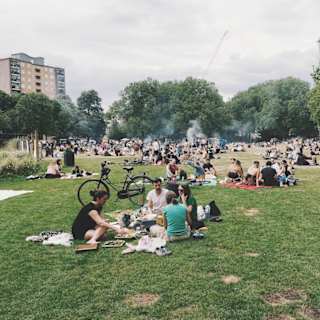
Understanding the Rise of Third Spaces
The concept of third spaces refers to social environments that are distinct from the home (first space) and workplace (second space). Coined by sociologist Ray Oldenburg in the late 1980s, third spaces encompass various communal areas where individuals can gather, socialize, and engage in leisure activities. Examples include cafes, parks, libraries, and community centers. These spaces are vital for fostering community interaction and social cohesion.
Evolution of Third Spaces
- Historical Context: Third spaces have existed for centuries, serving as informal gathering spots where people can connect outside of their daily routines. Historically, places like markets, bars, and town squares have fulfilled this role[2][3].
- Impact of Technology: In recent years, the rise of digital communication has transformed the landscape of third spaces. With more people working remotely and relying on online interactions, traditional physical third spaces have seen a decline in popularity. This shift has led to a growing reliance on digital platforms for social engagement[2][4].
- Current Challenges: The decline of third spaces has been exacerbated by economic factors such as rising costs of living and the impacts of the COVID-19 pandemic, which promoted isolation and reduced the necessity for in-person interactions. Many individuals find it impractical to seek out physical third spaces due to these challenges[2][4].
The Digital Transformation
As physical third spaces become less accessible, there has been a notable rise in digital third spaces. These virtual environments allow users to interact socially through platforms like Zoom or virtual reality applications. However, these digital spaces often lack the spontaneous and serendipitous interactions that characterize physical third spaces[2][3].
Importance of Third Spaces
- Social Cohesion: Third spaces play a crucial role in enhancing social capital by providing opportunities for individuals to meet new people, share ideas, and foster community ties. The absence of these spaces can lead to increased feelings of loneliness and social isolation[4][5].
- Mental Health: The decline in available third spaces has been linked to rising mental health issues, including anxiety and depression. Engaging in communal activities within these environments is essential for emotional well-being[4][5].
- Future Outlook: Despite current challenges, there is potential for revitalizing third spaces through innovative approaches. Encouraging businesses to create public gathering areas or repurposing existing facilities can help restore these vital community hubs[4][5].
Conclusion
The rise of third spaces reflects an ongoing evolution in how individuals interact within their communities. While traditional physical third spaces face significant challenges, the emergence of digital alternatives indicates a shift in social dynamics. Moving forward, fostering both physical and digital third spaces will be essential for maintaining social connections and enhancing community well-being.
Citations:
[1] https://thirdspacenetwork.com/about/defining-the-third-space/
[2] https://www.spectatornews.com/opinion/2024/02/the-crossroad-of-third-spaces-in-a-digital-age/
[3] https://www.eurac.edu/en/blogs/imagining-futures/third-places-and-why-we-need-them-zoe-weisel-mila-miletic
[4] https://www.honorsociety.org/articles/what-happened-third-spaces
[5] https://www.newground.com/insights/the-emergence-of-the-third-space-in-workplace-and-retail-design/
[6] https://communitycoach.me/the-resurgence-of-the-third-place/
[7] https://www.reddit.com/r/slatestarcodex/comments/15likwr/has_anyone_here_successfully_created_a_third_space/
[8] https://www.whynot.org.au/wellbeing/community-and-the-disappearing-phenomenon-of-third-spaces/








